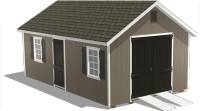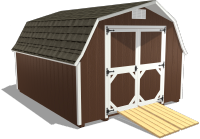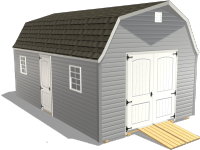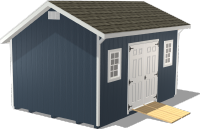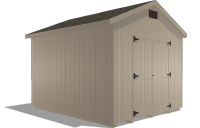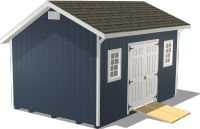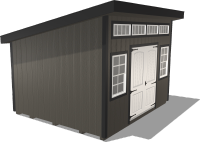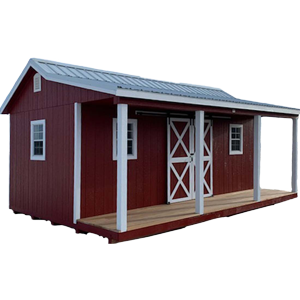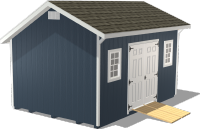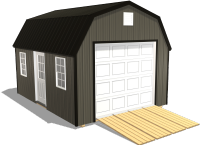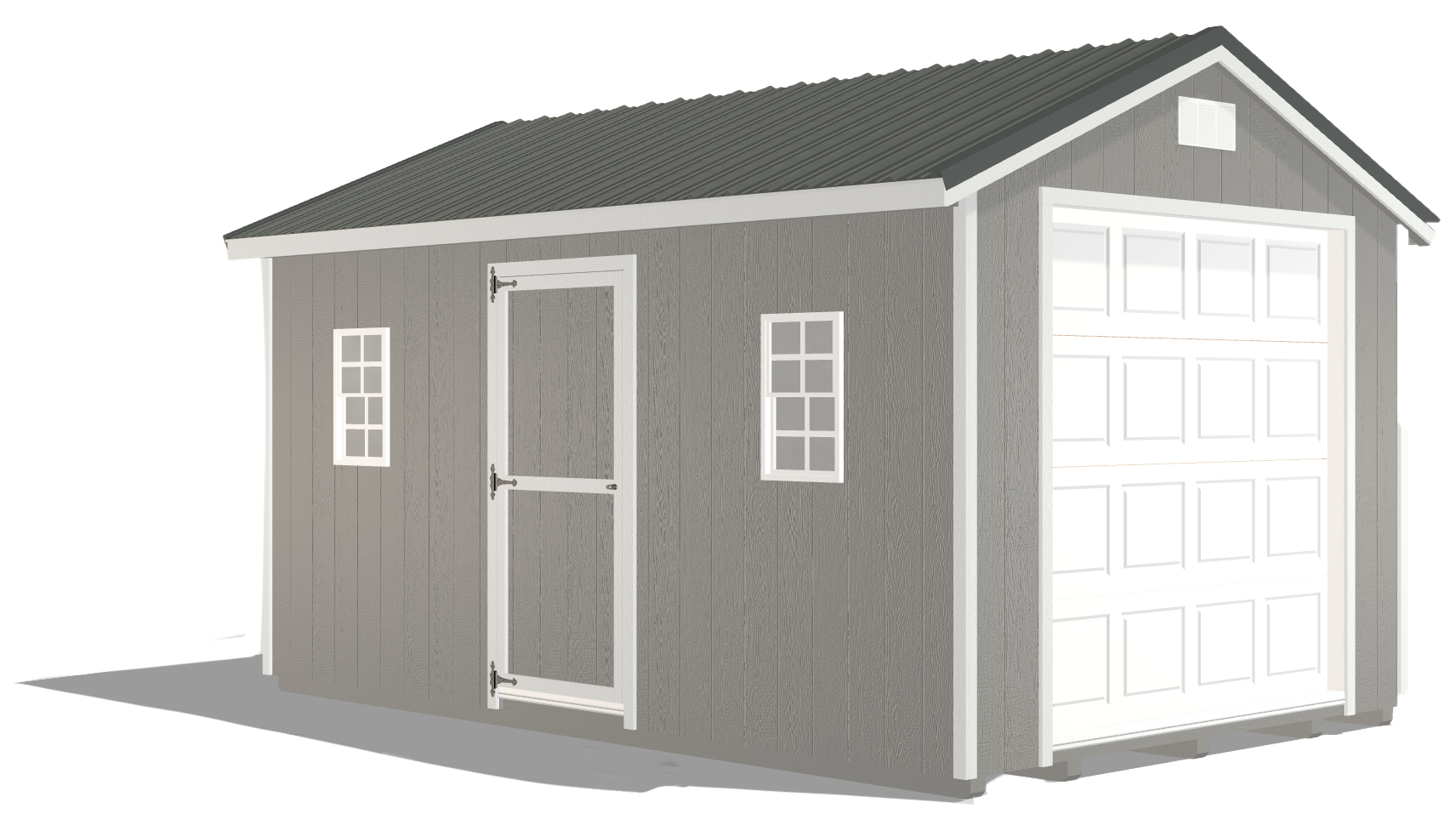Crafting the Perfect Chicken Coop Run: Safety, Comfort, Efficiency
by Dakota Storage Buildings, on August 12, 2024

Backyard chicken keeping has become a popular hobby for homeowners seeking farm-fresh eggs. If you are considering raising backyard chickens, the idea can be both exciting and daunting. Chicken coop runs are a crucial yet often overlooked element of chicken keeping. However, with the right knowledge and guidance, you can create a safe and comfortable environment for your flock. Understanding why chicken runs is essential and knowing what to look for in chicken coop designs will help ensure the health, safety, and well-being of your flock.
Why Chicken Runs Are Essential for Happy Chickens
Chicken coop runs provide a secure environment where chickens can exercise, forage, and engage in natural behaviors. Chickens need room to move, scratch the ground, and hunt for insects, all of which contribute to their overall happiness and quality of life. By allowing chickens to roam freely in a designated run, you ensure they have the opportunity to stay active, which helps maintain their fitness and prevents behavioral issues such as pecking or aggression. These natural behaviors are crucial for their physical and mental health.
Well-thought-out chicken coop designs offer protection from predators and incorporate biosecurity measures to prevent disease transmission. A secure enclosure is essential to keep your flock safe from predators like raccoons, foxes, and hawks. Exposing your chickens to outdoor elements and natural light within a controlled environment helps reduce stress, leading to increased egg production and overall flock health. Providing chickens with access to a safe outdoor space enhances their quality of life and promotes a more productive flock.
Size Matters: Determining the Right Size for Your Chicken Run

Adequate space is crucial for chickens to roam and exercise comfortably. Chickens need sufficient space to move freely and engage in natural behaviors. Without it, a cramped run can lead to stress, aggression, and various health problems. As a general guideline, each chicken should have at least 8 square feet of outdoor space. If you have 5 chickens in your flock, your run would need to be at least 40 square feet. This ensures that they have enough room to stretch their wings, forage, and explore, which are all essential activities for maintaining their physical and mental health.
When planning your chicken coop run ideas, it is important to consider not just the minimum space requirements, but also how to maximize the use of that space to enhance the chickens' environment. Adding vertical enrichment elements such as perches and platforms can significantly increase the usable area within the run. These features provide additional space for chickens to explore and play, prevent boredom, and encourage natural behaviors. By carefully planning and choosing the best run size and layout for your flock, you can create a comfortable and stimulating environment that supports the health and happiness of your flock.
Selecting the Best Materials for a Long-Lasting Chicken Run
Selecting the right materials for your chicken coop run is essential for ensuring durability and protection. The most common materials include wood, wire mesh, and PVC. Each type of material has its own characteristics and unique benefits.

Wood
Wood is a popular choice due to its sturdiness and natural appearance, but it requires regular maintenance to prevent rot and weather damage. To extend the lifespan of a wooden chicken run, it is important to treat the wood with weather-resistant sealants and inspect it periodically for signs of decay or pest infestation.
Advantages of Wood:
- Sturdy and natural appearance
- Can be painted or stained to match aesthetic preferences
- Provides a more traditional and visually appealing look
- Good insulating properties, keeping the run warmer in cold weather
PVC
PVC is a lightweight and easy-to-clean material that offers some advantages in terms of convenience, but it may not be as durable as wood or wire mesh. It can be a good option for temporary or movable runs, but for long-term use, combining PVC with other more durable materials might be necessary.
Advantages of PVC:
- Lightweight and easy to clean
- Resistant to rot and corrosion
- Easy to assemble and disassemble for temporary setups
- Low maintenance requirements
Aluminum
Aluminum is a strong and lightweight material that offers excellent durability and is able to resist corrosion. It is a great choice for long-term chicken runs because it requires minimal maintenance and withstands harsh weather conditions. Aluminum is also versatile and can be easily shaped to fit any design.
Advantages of Aluminum:
- Strong and lightweight
- Resistant to rust and corrosion
- Low maintenance
- Durable and long-lasting

Wire Mesh
Wire mesh, also known as hardware cloth, is another excellent option, particularly for its ability to provide robust predator protection. When choosing wire mesh, choose materials with small openings to prevent predators from reaching in and harming the chickens. Hardware cloth with a mesh size of 1/4 inch or less is typically recommended for optimal safety.
Advantages of Wire Mesh:
- Excellent predator protection
- Robust and durable
- Allows for good ventilation, reducing humidity buildup
- Easy to install and modify
Chicken Wire
Chicken wire is a common and cost-effective option for enclosing chicken runs. While it is not as strong as wire mesh, it can be used effectively for temporary runs or in combination with more sturdy materials for added protection.
Advantages of Chicken Wire:
- Cost-effective
- Easy to install
- Provides basic protection against some predators
- Flexible and can be shaped easily
Chain Link Fencing
Chain link fencing provides protection and durability for chicken runs. It is strong and can withstand larger predators, making it an ideal choice for long-term enclosures. However, additional measures, such as lining the bottom with hardware cloth, may be necessary to prevent smaller predators from getting through.
Advantages of Chain Link Fencing:
- Strong and durable
- Large animal predator protection
- Long-lasting and low-maintenance
- Provides good visibility and ventilation
Chicken Coop Run Construction
Proper construction techniques are just as important as the type of material in creating secure and lasting chicken coop runs. Ensure all joints are securely fastened, and use weather-resistant fasteners to prevent rust and degradation. Reinforcing the base of the run with buried hardware cloth or a concrete foundation can add an extra layer of protection against digging predators. By carefully choosing durable materials and employing solid construction practices, you can build a chicken run that provides a safe and lasting environment for your flock.
How to Fortify Your Chicken Run for Maximum Predator Defense
Keeping your flock safe from predators is a top priority for any chicken run. Chickens are vulnerable to numerous threats including raccoons, foxes, hawks, and neighborhood dogs. Ensuring the safety of your flock begins with using secure fencing. Hardware cloth, with its smaller openings, is far more effective than standard chicken wire in keeping predators out. This material is tough and resilient, providing a strong barrier against animals that might try to squeeze through or claw their way in. Burying the fencing at least 12 inches underground can prevent digging predators from accessing the run from below.
Motion-activated lights or sprinklers can serve as effective deterrents, startling and scaring away potential intruders before they can get close to the chicken coop run. These devices are especially useful at night when many predators are most active. Incorporating a roof or cover over the run can also protect against aerial predators like hawks. By combining these methods, you create multiple layers of defense that significantly reduce the risk, ensuring that your chickens remain safe and secure in their outdoor space.
Ensuring Your Chicken Run Stays Clean and Parasite-Free
Regular maintenance and cleanliness are essential for maintaining a healthy chicken run. To prevent disease and ensure the well-being of your flock, it is crucial to clean the coop regularly. This involves removing droppings, soiled bedding, and leftover food, which can attract pests and harbor harmful bacteria. Effectively managing waste is key to reducing odors and keeping the run area hygienic. Composting chicken waste can be a sustainable way to manage waste while also producing valuable fertilizer for your garden.
Controlling parasites is another important aspect of maintaining a clean chicken coop run. Regularly inspect your chickens and their living area for signs of mites, lice, and other pests. Using natural and eco-friendly cleaning solutions can help eliminate parasites without exposing your chickens to harsh chemicals. Diatomaceous earth can be sprinkled in the coop and nesting boxes to deter parasites. By prioritizing cleanliness and adopting sustainable cleaning practices, you can create a healthy and comfortable environment for your chickens, promoting their overall health and productivity.
Creating a Stimulating and Happy Environment for Your Chickens

Environmental enrichment is essential for promoting natural behaviors and mental stimulation in chickens. Incorporating perches, dust baths, and foraging areas within the run can keep your chickens engaged and happy.
Perches: These provide opportunities for roosting and give chickens a vantage point to survey their surroundings like they naturally would outside.
Dust Baths: This activity is vital for chickens to maintain feather health and control parasites.
Foraging Areas: Providing designated spaces for chickens to scratch and hunt for insects caters to their instinctual behaviors and encourages physical activity.
Adding plants, herbs, and other natural elements to the chicken coop run can create an engaging environment that encourages chickens to explore and interact with their surroundings. Planting edible herbs like mint, basil, and parsley enhances the run’s aesthetic appeal and provides chickens with nutritious snacks. Natural elements such as logs, stumps, and small bushes can offer shade and additional foraging opportunities, making the environment more stimulating. By creating a varied and enriching habitat, you reduce stress and promote the overall health and happiness of your flock.
Enhance Your Chicken Keeping with a Well-Planned Run
Well-designed chicken coop runs are crucial for providing a safe, healthy, and stimulating environment for backyard chickens. By considering factors such as size, materials, predator protection, and maintenance, homeowners can create a nurturing and enriching space for their flock. With the right setup, you can enjoy the rewards of backyard chicken keeping while ensuring the well-being of your flock year-round. Investing time and effort into creating optimal chicken coop designs not only enhances the quality of life for your chickens but also makes the experience of raising them more enjoyable and rewarding for you. To get started, download our “Beginner's Guide to Raising Backyard Chickens” and learn everything you need to know about setting up and maintaining a thriving chicken coop. Start planning today to create a perfect sanctuary for your feathered companions.




